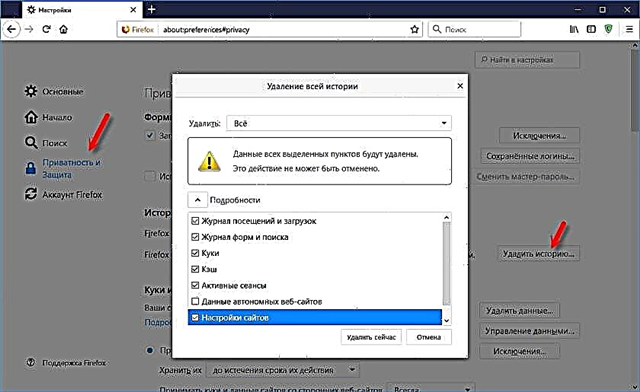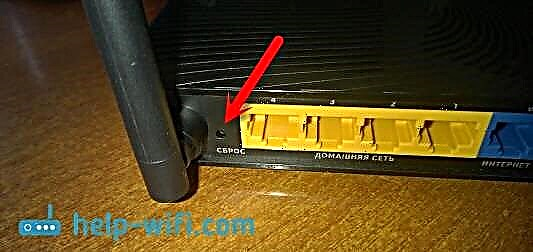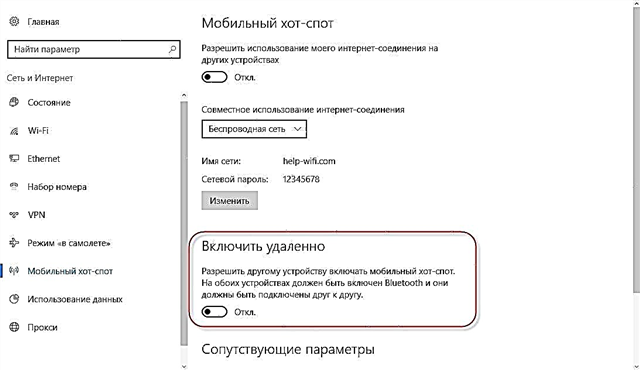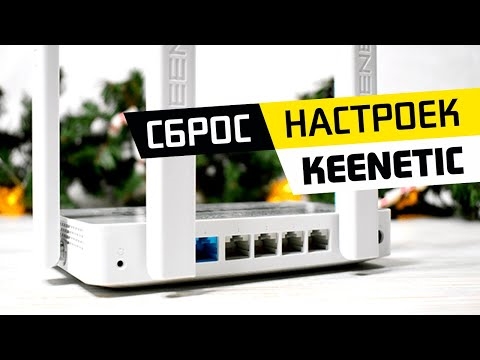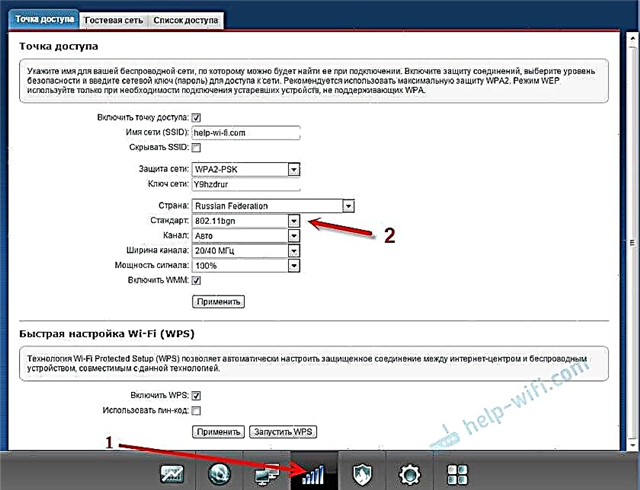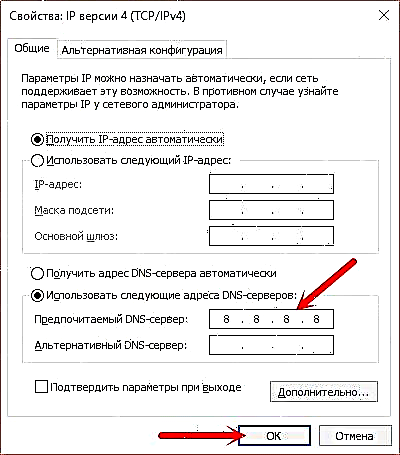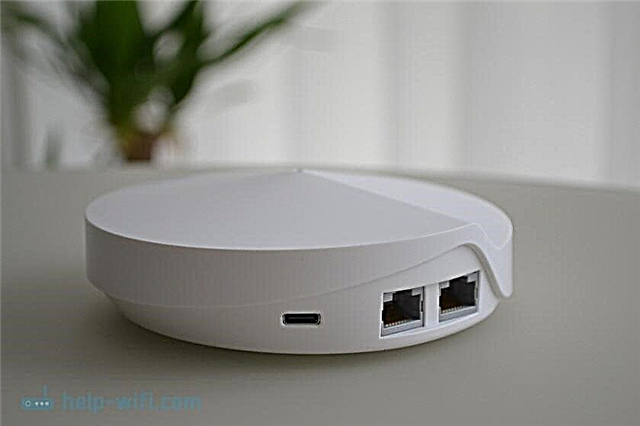At first glance, it may seem that TP-Link Deco P7 is a regular Mesh Wi-Fi system, which, for example, is no different from the same TP-Link Deco M5. Yes, these two systems are very similar both in appearance and in technical characteristics. But Deco P7 has one interesting feature - support for Powerline technology. This means that the modules of this system can be interconnected not only via a Wi-Fi network, but also via an electrical network. A hybrid Wi-Fi + PLC (Power Line Communication / Carrier) connection is used. And this allows you to further increase the coverage radius of the wireless network and build a network in those places where the Mesh system modules cannot connect via Wi-Fi (for example, due to a long distance, or strong interference). It also has a positive effect on the stability of the connection between the modules and the connection speed.
For those who are not in the subject - a few words about Mesh Wi-Fi. The trick of these networks is that they can be created from the required number of modules (we can say that these are ordinary routers with support for certain technologies). These modules are connected to each other via a Wi-Fi network or a network cable (and in the case of Deco P7, also via an electrical network) and create a single, seamless Wi-Fi network. The coverage radius of the Wi-Fi network can be increased by installing new modules. For more information on this topic, see the article Wi-Fi Mesh Systems - What It Is and Why Mesh Networks Are The Future.
Since this Mesh system supports Powerline technology (HomePlug AV standard), the recommendation is also to read the article HomePlug AV standard and PowerLine adapters: what is it and how does it work? TP-Link Deco P7 comes in only two variants: 2 devices and 3 devices (Deco modules). Why is it not possible to buy one module, as in the case of Deco M4, or Deco M5? I think it's all about the Powerline technology. With one module installed, it simply won't work, so one device isn't for sale. And we can already conclude that buying TP-Link Deco P7 for a small apartment or house in most cases simply makes no sense. If one module covers up to 185 square meters of Wi-Fi signal, then you are unlikely to want to overpay for a second module, which you may never need. Well, you will also have to overpay a little for Powerline support.
TP-Link Deco P7 comes in only two variants: 2 devices and 3 devices (Deco modules). Why is it not possible to buy one module, as in the case of Deco M4, or Deco M5? I think it's all about the Powerline technology. With one module installed, it simply won't work, so one device isn't for sale. And we can already conclude that buying TP-Link Deco P7 for a small apartment or house in most cases simply makes no sense. If one module covers up to 185 square meters of Wi-Fi signal, then you are unlikely to want to overpay for a second module, which you may never need. Well, you will also have to overpay a little for Powerline support.
For a small apartment, or a small private house, Deco M4 or Deco M5 are best suited. Moreover, the latter is almost the same in characteristics as Deco P7, but there is a delivery option with one module and no Powerline support.
Specifications and functionality TP-Link Deco P7
It is a powerful Mesh Wi-Fi system that can handle up to 100 devices. All thanks to the Qualcomm 4-core processor. Also, each module has 32 MB of permanent memory and 256 MB of RAM. There is no doubt about the performance of this system. It will be enough for all your devices without any problems. The network will work stably and quickly, even if all devices are actively using the connection. I think that such a system can be easily installed in some office, cafe, restaurant, etc. Despite the fact that the TP-Link website says: "Home hybrid Mesh Wi-Fi system". So yes, there are devices of a completely different level for organizing wireless networks in institutions. But this does not prevent us from using the Deco P7. Moreover, this system can be installed and configured on your own in just a few minutes.
Each module has 4 Wi-Fi antennas. The manufacturer promises wireless coverage up to 185 sq.m. from one Deco P7 module. Of course, depending on conditions and various external factors, the coverage area will differ. But the signal strength of the wireless network is really very good.
Wi-Fi speed in the range of 5 GHz up to 867 Mbps. And in the 2.4 GHz range up to 400 Mbps. The speed measurements are at the end of the article.
LAN / WAN ports (there are two of them on each module) are of course gigabit. USB Type-C is used to connect the power adapter! As one friend of mine would say: "This is the level" 🙂
There is support for Bluetooth 4.2. As I understand it, it is needed for easier configuration of modules. First, they connect to a mobile device via Bluetooth, there is no need to connect to their Wi-Fi network. Also, if I understand correctly, Bluetooth support in TP-Link Deco P7 may be needed to network different smart home devices. But how it works, and whether it works at all, I cannot tell. Didn't check.
Other functions:
- "Access Point" operating mode.
- Supports MU-MIMO technology, Beamforming, Auto Path Selection, AP Steering, Self-Healing, Band Steering.
- TP-Link HomeCare - Antivirus, parental control, QoS and other features to protect your network.
- Possibility of connecting Deco P7 modules using a network cable and power supply.
- Configuring and controlling a Mesh Wi-Fi system via the "Deco" application.
- Remote control (via the Internet).
- Compatible with Amazon Alexa and IFTTT.
Powerline in TP-Link Deco P7 works according to the HomePlug AV standard and provides connection speeds between modules up to 600 Mbps. Up to 300 meters within one electric meter. The speed of this connection depends on the quality of the wiring itself.
Package contents and appearance of TP-Link Deco P7
TP-Link Deco P7 is packed very securely. In the usual box, which contains all the necessary information about the device, there is another powerful box.

Inside we are immediately greeted by three modules (I have a version of three devices). And under the cardboard cover with holes for the modules themselves are boxes with power adapters, a network cable and instructions.

The whole set of devices. In my case, these are three Deco P7 modules, three power adapters, a network cable and an envelope with instructions.

The power adapter is not small. Made very high quality. There is an indicator at the top, which, as I understand it, shows us the status of the connection through the Powerline (power cable).

And this is how the Mesh Wi-Fi modules themselves look like:

The modules are made of very high quality white plastic. The top and bottom are matte and the side edge is glossy. The assembly is very good, it seems that the body of the device is monolithic. At the top there is one indicator (which can glow in different colors) and the TP-Link company logo.

On the Deco P7 module itself, there are only two LAN / WAN ports and one USB Type-C port for connecting a power adapter.

Below you can find a Reset button to reset the Mesh Wi-Fi system settings, small ventilation holes and a factory information sticker. There are rubber feet, thanks to which the module is very stable on the table. But there is no wall or ceiling mount.

More photos:

The modules look very stylish and fit any interior without any problems.

Very good quality of the modules and cables themselves. Everything is very secure and beautifully packaged.
Connection speed via TP-Link Deco P7
Since my Internet connection speed at the provider's tariff is up to 100 Mbps, I initially did not even plan to take speed measurements when connecting via TP-Link Deco P7. I had no doubts that this system would deliver 100 Mbps over Wi-Fi in the 5 GHz band without any problems. In the 2.4 GHz band, this is almost impossible. My range is heavily loaded with neighboring Wi-Fi networks.
After setting up, of course, I ran a test of the speed of the Internet connection. Here are the results: in the 5 GHz range on iPhone X:

And on a laptop. The network level in Windows 10 is not maximum (without one division), the 5 GHz band.

The iPhone has the maximum speed my ISP can provide. On a laptop, the speed is slightly lower, since the signal level is not maximum.
In the 2.4 GHz band. On the same iPhone X in the 2.4 GHz band (the 5 GHz network was disabled in the TP-Link Deco P7 settings), the speed is as follows:

And on a laptop:

By installing such a system in your home, you will get the maximum connection speed. If we are talking about connecting to a Wi-Fi network in the 5 GHz range, then most likely the speed will be limited by the maximum speed that your Internet provider gives out. Also, the network will work quickly and stably even under the load that the connected devices will create.
Conclusions
TP-Link Deco P7 is powerful enough, functional and at the same time simple system with which you can build a large and fast wireless network. I believe that buying Deco P7 only makes sense when you need to provide stable Wi-Fi coverage in a large house or apartment. Or in the case when, due to the layout of the room, or strong interference, the connection between the modules is not very stable. Thanks to Powerline technology, the modules will be connected via a power cable. This system can be recommended even for installation in some small establishments.
If you do not need Powerline support and want to be able to buy (or in the future to buy) one Mesh Wi-Fi system module, then pay attention to Deco M4 or Deco M5.

